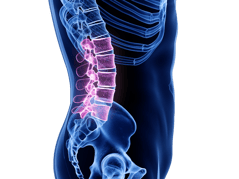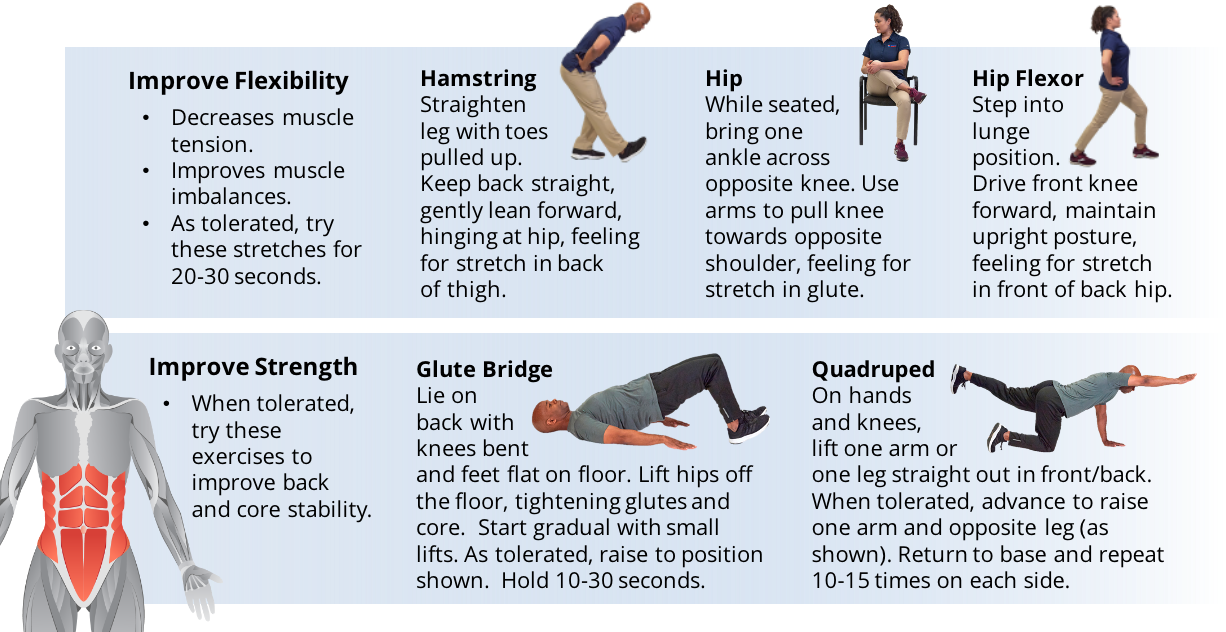Most of us will experience at least one episode of back discomfort in our lifetime.
Statistically, it is the most common musculoskeletal ailment in our modern society.
Chances are high that you or someone you know may be in need of support with the treatment of back pain so here are some tips to get you started in the right direction!

- LIMIT BED REST AND STAY ACTIVE
While this may seem counter-intuitive, bed rest typically will not put you on the mend. Continue light activity, like walking, as tolerated to improve function.
- AVOID AGGRAVATING ACTIVITIES
At the same time, it's recommended that you restrict activities that seem to increase your discomfort. Limit strenuous tasks like heavy lifting or carrying. Avoid excessive forward and backward bending at the waist. While staying active is important, don't over-do it!
- MAINTAIN GOOD POSTURE
Poor posture places stress on the spine and soft tissues. This can often prolong or worsen your discomfort. But what does "good posture" mean? In general, remember to maintain a neutral spine: a straight line from ears to shoulder to hips.
- AVOID BACK BRACES
Braces are a common remedy for back discomfort but, be warned! They provide a false sense of security and you may unwittingly over-work your body. Some professionals even suspect that back braces may prevent proper lifting techniques and inhibit the use of protective muscles in your core.
- ICE AND HEAT
At the first sign of pain, ice is often the recommended choice for the first 48 hours. If you're currently in the throes of ongoing back discomfort, heat is preferred. Since this solution is very low risk, if you've tried one and it hasn't worked, try the other! Many people respond to ice and heat differently.
- QUIT SMOKING
Yes, there are many known consequences to this common habit but did you know that it can affect your body pain, too? Smoking reduces blood flow to soft tissues and delays the healing process.
- GET FLEXIBLE AND STRONG
Our strength and flexibility balance plays a significant role in preventing back pain and is, in fact, likely one of the first things a professional will discuss with you if you seek further help. Here are a few stretches and exercises to get you started in the right direction!
